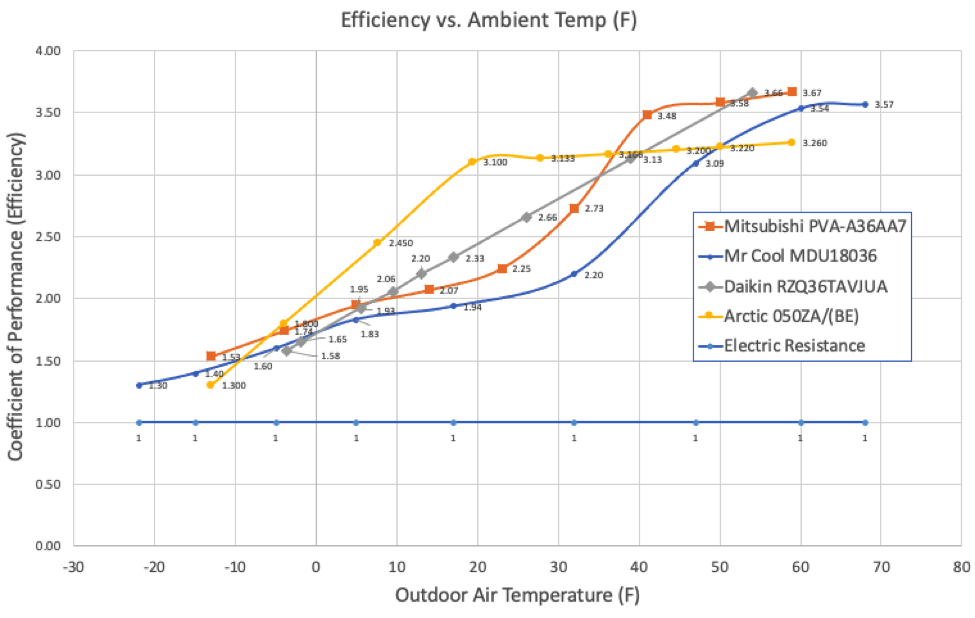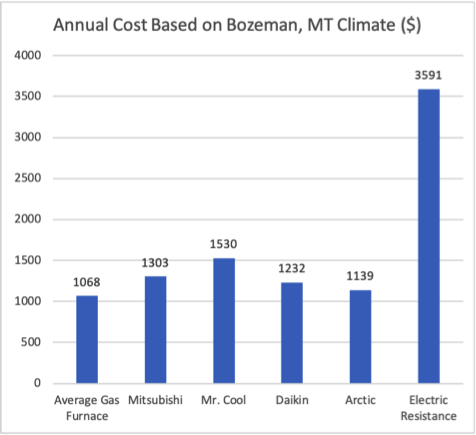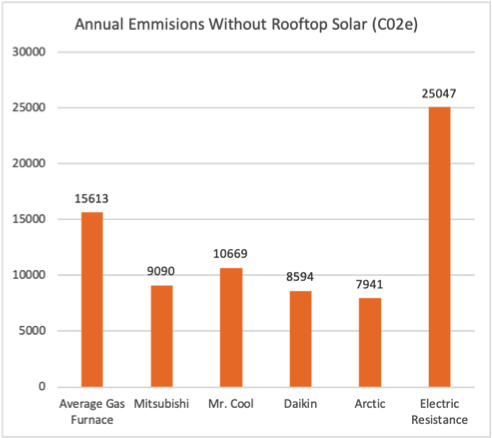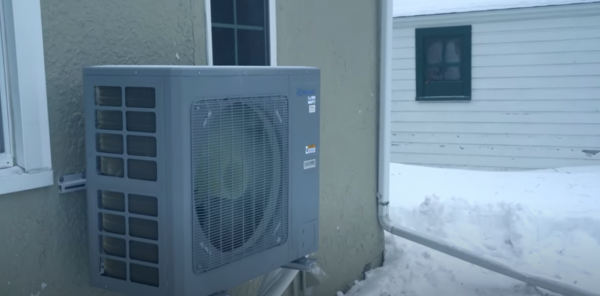Packaged Terminal Heat Pumps (PTHPs) have undergone remarkable evolution since their early iterations as Packaged Terminal Air Conditioners (PTACs) commonly found in hotels.
I’ve lived in frigid climates that have four distinct seasons my whole life. These places, like my hometown of Boulder Junction, Wisconsin, and my college town of Bozeman, Montana, have winter daily average temperatures in the range of 10-30 degrees F, and are certainly what you would call “heating dominated climates.” Air conditioning is often not needed at all. These cold climates deserve special considerations when selecting modern heating systems.
At Beyond Efficiency we know that the future is electric, and eventually combustion will be eliminated as a heating source in the vast majority of homes. However, the simplicity of burning things for heat and the high amount of heat that it produces has been hard to beat in cold climates. Electric resistance heating using electricity from the grid is often not a better option than natural gas or propane in regard to green house gas (GHG) emissions, since most grid electricity consumes fossil fuels in its making also. And in most regions of the country you will pay 2-4x more in utility bills as compared to heating with gas. A better heat source is needed.
Fortunately, market and policy demand have brought us to the point of being able to produce heat using electricity at a cost comparable to natural gas, using heat pumps. Air-source heat pumps (as opposed to ground-source heat pumps or geothermal) concentrate heat from the outside air and pump it indoors. They concentrate heat energy from a giant space in order to make a little space hotter. And now, some heat pumps can continue to pull concentrated heat from the outside air even if temperatures are well below zero, in some cases operating down to or even lower than -22º F (see this real-life heat pump demo from MRCOOL). With performance like this, a backup heat source is still advised, but it will run so infrequently that electric resistance heat is acceptable be used, which means the system can be made all-electric and gas infrastructure can be eliminated from the home.
Being the energy nerd that I am, when choosing a heat pump for my own home in Bozeman I dug into exactly how various high-end models’ performances compare at normal winter temperatures in Bozeman as well as at the sub-zero temps that we normally see for about one or two weeks each winter. I compared three air-to-air heat pumps that would be used to blow hot air into my home and also included one air-to-water heat pump that would make hot fluid for a radiant flooring heating system. The reported efficiencies of each unit are dependent on temperature and vary a good amount (see Figure 1).

Figure 1 - the efficiency of heat pumps changes with the outdoor temperature. Some data are extrapolated to produce intermediate data points. Electric resistance heat has an efficiency of 1, or 100%. Heat pumps provide more heat energy to the home than the energy they use, so their efficiency is greater than 1.
The variance in performance means that often units can differ significantly in the amount of energy they will use based on the local climate. For example, an Arctic heat pump performs the best of the four options in the mid-winter temperature range of 20-30º F, which is the range in which the most heating is required in Bozeman. However, at very low temps in the range of -10º to 0º F and at relatively mild temps of 40-50º F, differences between options are reduced and the unit selection will not have as much impact on annual electricity costs or associated GHG emissions. Note that as the temperature drops, so does the efficiency of the heat pump unit. Due to this effect, at very low temps below -5º F or a Coefficient of Performance (COP) of 1.6, the associated emissions from the electricity required for heat pumps is about the same as that of natural gas (based on national avg. emissions per eia.gov). That said, heat pumps win out on a net annual basis, and for those who are interested in offsetting their GHG emissions natural gas furnaces will never be able to run on solar power. It is worth taking into account that the electricity grid is gradually getting cleaner, and the cost of rooftop solar is gradually decreasing, so this “break-even point” with natural gas continues to move in favor of using electricity for all energy uses in the home.

Figure 2 - Annual costs are based on national averages of 0.1319 $/kWh and 0.92 $/therm (EIA.gov). Based on Bozeman, MT weather data, 36,000 BTU/hr maximum heating load. Gas furnace efficiency assumed as 80%.

Figure 3 - emissions based on national averages of 0.92 lbs C02e / kWh and 13.446 lbs C02e / therm (EIA.gov). Based on Bozeman, MT weather data & 36,000 BTU/hr maximum heating load. Gas furnace efficiency assumed as 80%.
From the above discussion, it’s clear that there are more design considerations in cold climates than warm climates when sizing and selecting air-source heat pumps. Using US national averages and grid data from the Energy Information Agency (EIA.gov), the most efficient heat pumps will cost approximately the same amount to run, but will have about 40-50% less emissions if running on grid electricity (based on Bozeman, MT weather data). Heat pumps require a more thoughtful design and selection process than gas furnaces in cold climates.
Costs and Getting It Installed
I received quotes from five reputable heating contractors in Bozeman. The cost to replace an old gas furnace with a heat pump in my 1,500 square-foot home was in the range of $9,000 - $13,000, which is higher than the cost for a very good, high-efficiency gas furnace, which came in around $7,000. A less expensive option may be the Mr. Cool Universal DIY heat pump shown in the charts above, which could likely be installed by a thoughtful homeowner on their own for around $4000-$5000. Assuming that the unit runs as specified, this option may be the cheapest in the long-run, even considering its lower efficiency. There are many other factors at play, however. I personally opted for professional installation because the Mr. Cool brand is relatively new, I needed a new duct system in my house on top of the heating unit, and the company I went with offered an excellent warranty/maintenance program plus financing.
It’s clear that for the average homeowner, upfront cost will be higher for installing the all-electric option. In the long run though, gas is likely not the cheaper option. A new heating system may be used for 20-30 years. By that time, most municipalities in the United States may have banned the installation of new natural gas furnaces, gas may cost twice as much due to carbon taxation, and renewable electricity may be so ubiquitous as to make the price of electricity effectively zero.
Further Resources
This topic is extensive, and it isn’t possible to fit complete guidelines for selection and installation into a single blog post. There are a few simple steps that can help a lot to increase and maintain the efficiency of heat pump systems, and I want to be sure anyone considering a new heat pump reads them.
Follow this link for a good article from an engineer at Stephen Winter Associates on how efficiency can vary based on other factors besides manufacturer-specified performance.





























